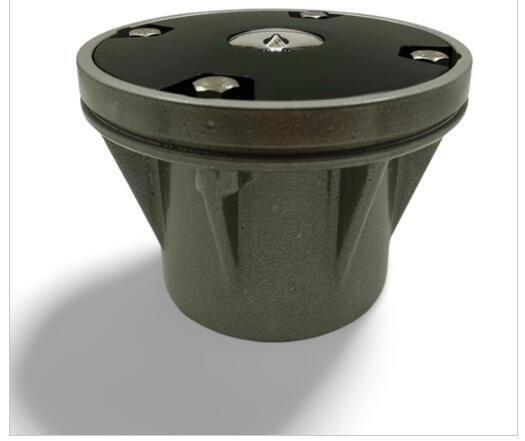Charting the Descent: A Comprehensive Guide to Modern Heliport Lighting Requirements
The safe operation of rotary-wing aircraft, particularly during night-time or in conditions of reduced visibility, hinges upon a meticulously designed visual guidance system. This system is governed by a strict set of heliport lighting requirements, a complex framework of international standards and best practices that transform a simple landing area into a secure and identifiable aviation environment. These requirements are not arbitrary; they are a critical language of light that communicates essential information to pilots, enabling precise approach, hover, and touchdown. Understanding these mandates is essential for designers, operators, and aviation authorities responsible for creating and maintaining these vital facilities.
The foundation of all heliport lighting requirements is established by global aviation bodies, primarily the International Civil Aviation Organization (ICAO) through its Annex 14, Volume II, which is dedicated exclusively to Heliports. National authorities, such as the Federal Aviation Administration (FAA) in the United States with its Advisory Circular 150/5390-2C, further elaborate on these standards, tailoring them to specific operational needs and environments. Compliance with these regulations is not merely a legal formality but a fundamental aspect of operational safety and risk management.
The array of lights specified by heliport lighting requirements serves distinct and complementary functions, creating a complete visual picture for the pilot:
1. The Final Approach and Takeoff Area (FATO):
The FATO is the critical zone where the helicopter completes its landing or begins its takeoff. Its perimeter is definitively marked by lights. According to heliport lighting requirements, these must be flush-mounted, omnidirectional white lights. For ground-level heliports, these are often inset into the surface to prevent Foreign Object Damage (FOD) and are spaced at intervals not exceeding a defined distance to ensure a continuous and clearly discernible outline. Elevated heliports, such as those on hospital rooftops, utilize raised edge lights or panels to achieve the same effect, defining the safe load-bearing area.
2. The Touchdown and Lift-Off Area (TLOF):
Located within the FATO, the TLOF is where the helicopter actually makes contact. Heliport lighting requirements dictate that this area be marked by green, omnidirectional lights. This stark color contrast (green inside white) is crucial. It allows the pilot to instantly identify the precise center of the landing point within the larger FATO. Like FATO lights, TLOF lights are almost always flush-mounted to maintain a completely clear and obstacle-free surface.

3. Approach Path Guidance:
Guiding the pilot onto the correct approach path is paramount. This is primarily achieved through:
Approach Lights: These systems, typically comprising white lights, extend outward from the FATO threshold along the designated approach and departure paths. They provide vital alignment guidance, especially for steep or specific instrument approaches.
PAPI-H (Precision Approach Path Indicator for Helicopters): This is a critical visual aid. A PAPI-H system consists of two or more light units that project a combination of red and white beams. By maintaining the correct approach angle, the pilot will see a specific visual cue (e.g., two white, two red), indicating they are on the ideal glidepath. Seeing more red signals they are too low, while more white indicates they are too high.
| heliport lighting requirements |
4. Perimeter and Obstruction Lighting:
Defining the heliport's boundaries and marking any hazards is a non-negotiable aspect of heliport lighting requirements. The heliport perimeter is often defined by blue omnidirectional lights, clearly distinguishing the facility's limits from its surroundings. Furthermore, any objects protruding above the approach or departure surfaces—such as antennas, buildings, or trees—must be marked with red obstruction lights to ensure they are clearly visible to incoming and departing aircraft.
5. Wind Direction and Status Indicators:
Given the helicopter's sensitivity to wind, this information is vital. A wind cone is mandatory, and for night operations, it must be illuminated internally or externally. Sophisticated facilities often employ a Segmented Circle, a visual indicator that provides a quick-reference traffic pattern, and a lighted wind tetrahedron for enhanced visibility of wind direction.
The Technological Shift: LED and Solar Adoption
Modern heliport lighting requirements are increasingly met with advanced LED (Light Emitting Diode) technology. LEDs offer immense benefits that align perfectly with the demands of aviation safety: exceptional energy efficiency, incredibly long service life, high-intensity light output that penetrates fog and haze, and superior durability against vibration. Furthermore, for off-grid or emergency heliports, the integration of solar power systems to meet heliport lighting requirements has become a reliable and sustainable standard. These systems store energy during the day to power the lights throughout the night, ensuring uninterrupted operation without reliance on external power sources.
Compliance with heliport lighting requirements is a dynamic process that begins with meticulous design and continues through rigorous installation, routine maintenance, and periodic inspection. Lights must be kept clean, correctly aligned, and fully functional. The consequences of a single failed light can be significant, potentially leading to pilot misinterpretation and a safety incident.
Heliport lighting requirements represent a sophisticated and essential synthesis of regulation, engineering, and human factors. They provide the visual cues that are fundamental to safe helicopter operations after sunset or in low-visibility conditions. As urban air mobility evolves and the use of helicopters for medical, commercial, and emergency services continues to grow, the role of these standardized, reliable lighting systems will only become more critical. They are the unsung heroes of nocturnal aviation, silently and reliably guiding every descent and ensuring that every landing is a safe one.
